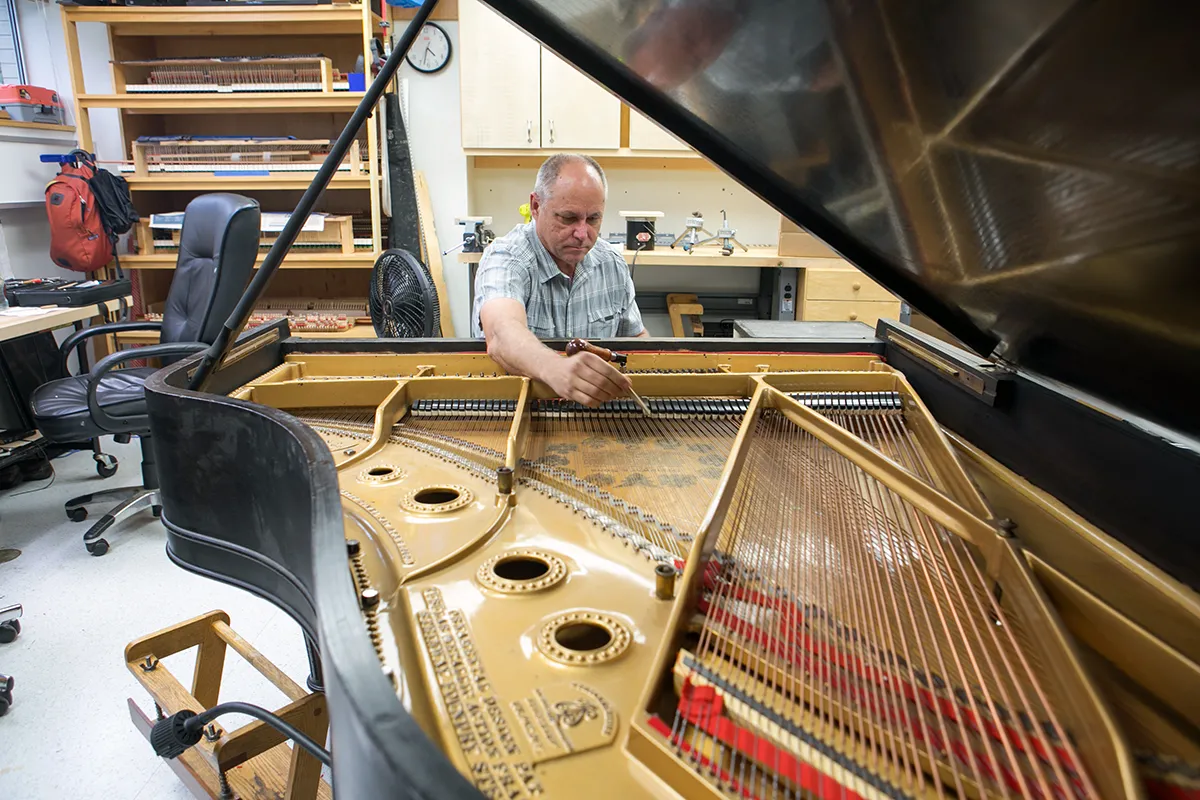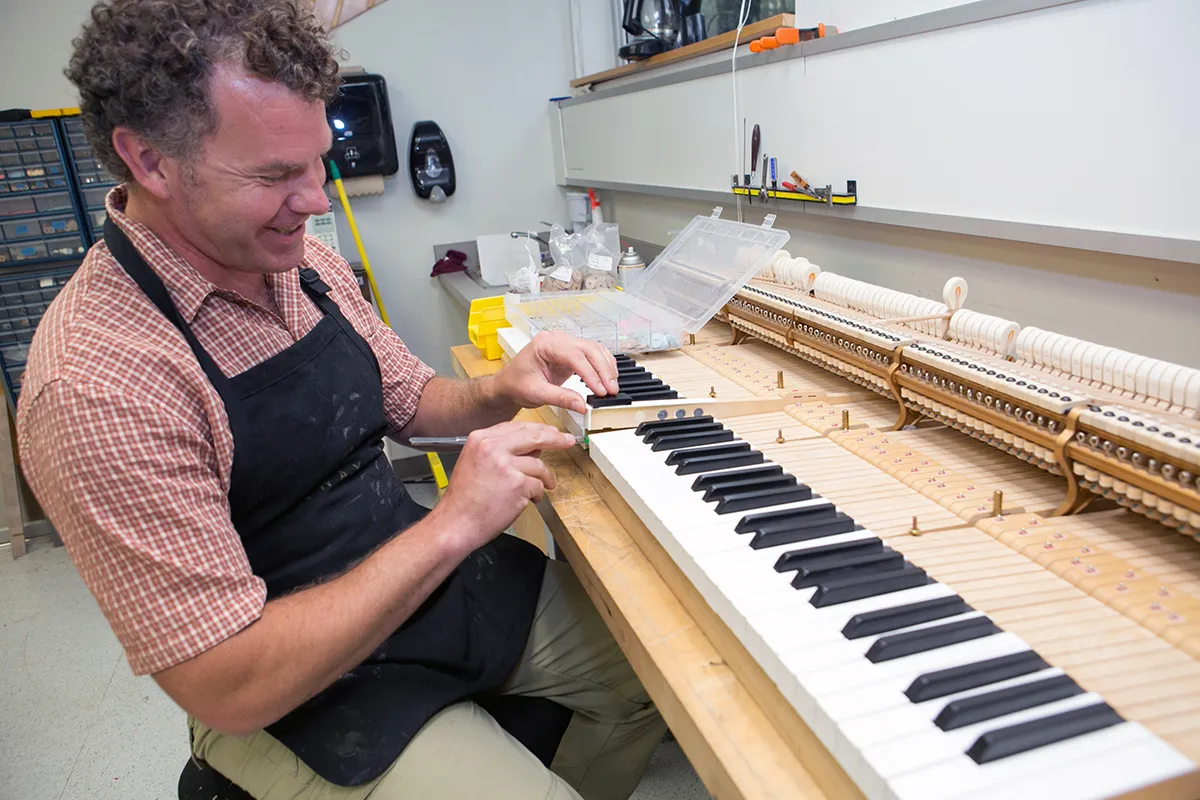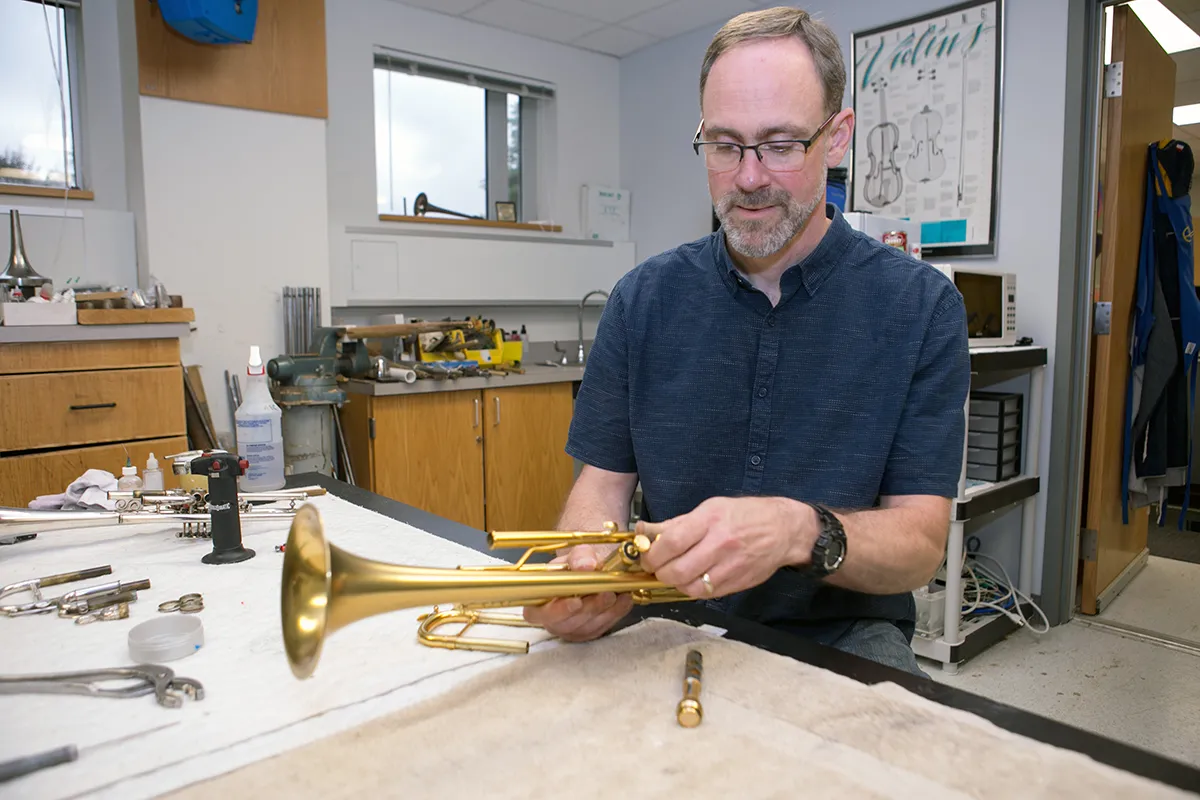From his not-quite subterranean piano repair shop on the lower floor of the Whalen Center for Music, Ithaca College’s lead piano technician Leonard Ostrander points out that the Steinway he’s working on is older than the college. The piano dates to 1887, IC to 1892. Was this Steinway among the Ithaca Conservatory of Music’s first pianos?
No confirmation has been found, but today that piano is one of nearly 1,500 instruments IC owns, giving the college nearly three times more instruments than it has music majors (about 550).
The school needs the large inventory because half of the music majors are in music education, where leading a marching band or school orchestra requires familiarity with a range of instruments. So students supplement studies on their primary instruments with lessons on so-called “secondary instruments” from IC’s vast collection.
Ostrander is one of three full-time music technicians who are responsible for managing the collection, supported by about 10 students. Two of the techs — Ostrander and assistant piano technician Tom Sayers — work exclusively on tuning and maintaining the school’s 175 pianos. The third, instrument repair technician Neil Adams, manages repairs, maintenance and the lending process for about 1,300 brass, woodwind and stringed instruments, as well as locker assignments for instrument storage.
Theirs is a never-ending job akin to painting the Golden Gate Bridge, which famously employs a staff of full-time painters.


